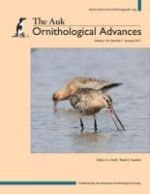Avian eggshells exhibit a variety of colors and patterns whose functions include camouflage, detection of brood parasites, and facilitation of embryonic development. In addition, eggshell coloration, specifically blue-green coloration, may signal a female's quality to her mate. This signaling hypothesis relies on the assumption that biliverdin, the pigment responsible for blue-green eggshell coloration, is an indicator of female quality. Biliverdin is the product of heme degradation and has antioxidant and immunomodulating properties, supporting the possibility that if only a limited amount of biliverdin can be produced, deposition of this pigment into eggshells may be costly to females. However, these putative physiological functions of biliverdin were established by mammal-based studies, even though mammals produce an enzyme—biliverdin reductase—that readily converts biliverdin into bilirubin. Thus, the assumed physiological properties of biliverdin stem from data based on the end-product bilirubin, rather than biliverdin itself. Therefore, to assess the physiological role of biliverdin in birds, it is essential to quantify biliverdin in nonmammalian tissues in a manner that is repeatable, uses relatively accessible laboratory equipment, and is accurate at very low concentrations. Here, we develop a protocol that quantifies biliverdin in avian liver and spleen, the 2 organs that are predominately responsible for biliverdin production. Biliverdin concentration in both tissues was highly repeatable (R = 0.99) and could be accurately quantified at concentrations as low as 3.1 nM, which was less than the concentration of biliverdin in every sample that we tested. Recovery was calculated based on additions of biliverdin standard to each sample, and recoveries typically ranged from 60% to 95% for all 16 species (13 families, 4 orders) of birds in this study. Use of this assay will allow for the quantification of biliverdin concentration in a tissue-specific manner, which will be critical in determining the type and extent of biliverdin's physiological role.
How to translate text using browser tools
12 October 2016
Quantifying biliverdin in liver and spleen samples from multiple avian species
Michael W. Butler,
Samantha C. Bociulis,
Aaron R. Little,
Jennifer A. Minnick,
Nathan J. Ritter,
Michael E. Rockman,
Marissa L. Rossi,
Justin K. Hines
ACCESS THE FULL ARTICLE

The Auk
Vol. 134 • No. 1
January 2017
Vol. 134 • No. 1
January 2017
biliverdin
eggshell coloration
heme oxygenase
immune function
oxidative physiology
protoporphyrin




